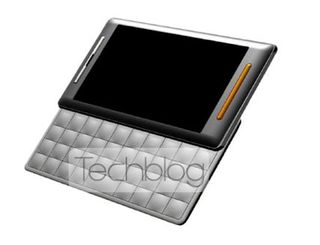Making the case for capacitive touch

Last month Microsoft CEO Steve Ballmer raised a bit of a ruckus (OK, when does he not) when discussing capacitive touchscreens and how he doesn't believe the iPhone uses them in a way that keeps the phone price economical.
Needless to say, many of you scoffed – nay, you were outraged – over the idea that Windows Mobile still doesn't support capacitive touchscreens simply because it costs too much. (And more than a few of you could care less, and that's OK, too.)
But fear not, loyal reader. We're here today to tell you that we believe capacitive touch is coming to Windows Mobile. We don't expect to see it with Windows Mobile 6.5, but it's probably coming thereafter. Our reasoning, after the break.
There is an argument to be made that we don't even need capacitive touchscreens on Windows phones. HTC has gotten pretty darn good and making the most out of resistive (witness the Touch HD). But here's why we want it: It's next, it's better, and it should have been done a long time ago.
What's the difference?
Anyone who has used an iPhone or iPod Touch (or even the Android-powered HTC G1) for more than 2 seconds knows the night-and-day difference between capacitive and resistive touchscreens. Capacitive just feels more natural. Heck, you don't even have to touch it.
And if you've never experienced a capacitive touchscreen, a quick trip to ye olde Wikipedia makes the technical argument:
Capacitive sensors work based on proximity, and do not have to be directly touched to be triggered. It is a durable technology that is used in a wide range of applications including point-of-sale systems, industrial controls, and public information kiosks. It has a higher clarity than Resistive technology.
Plus it's got that whole multitouch thing going for it, which is nice.
Get the Windows Central Newsletter
All the latest news, reviews, and guides for Windows and Xbox diehards.
OK, the downside.
(Capacitive) only responds to finger contact and will not work with a gloved hand or pen stylus unless the stylus is conductive and transmits the user's capacitance.
The case for capacitive: Exhibit A

Ballmer never said Microsoft never would support capacitive touchscreens, just that Apple wasn't doing it in a way that Microsoft considered to be economical. And back in January in Barcelona, Spain, our own Dieter Bohn found a Texas Instruments capacitive-screen device running Windows Mobile 6.5. While the WM6.5 OS didn't, doesn't and isn't expected to be able to take advantage of capacitive screens, we were still intrigued. It was the first time we'd seen Windows Mobile and a capacitive screen in the same room.
The case for capacitive: Exhibit B

We recently got wind of a Toshiba roadmap that features the K01, a ... wait for it ... capacitive touchscreen phone slated for late 2009, more likely 2010. It's planned to launch with Windows Mobile 6.5. But, again, why develop a phone with a capacitive touchscreen with an operating system that can't take advantage of it? Now remember that we're expecting Windows Mobile 7 sometime in 2010, and it's even money that we'll get an announcement fairly early in the year.
The case for capacitive: Exhibit C

And the most recent example, albeit another unofficial one. The rumored upcoming refresh to the Zune, Microsoft's portable media player. If the rumored specs pan out, what you're basically looking at is something that very much looks like an HTC Touch Diamond 2, with a capacitive touchscreen, and with a Zune operating system. And given that we're all expecting the Zune OS creep into Windows Mobile, this might be a pretty direct look at the future of the WinMo OS.
The right direction?
At this point, it's all speculation and conjecture on our part. There's been no official statement from Microsoft about what Windows Mobile 7 will look like or if it will support capacitive touchscreens. But we're starting to gain faith that support for capacitive screens is finally coming.
How about you guys? Is capacitive touch still something you even want in your Windows phone?
Phil is the father of two beautiful girls and is the Dad behind Modern Dad. Before that he spent seven years at the helm of Android Central. Before that he spent a decade in a newsroom of a two-time Pulitzer Prize-finalist newspaper. Before that — well, we don't talk much about those days. Subscribe to the Modern Dad newsletter!
